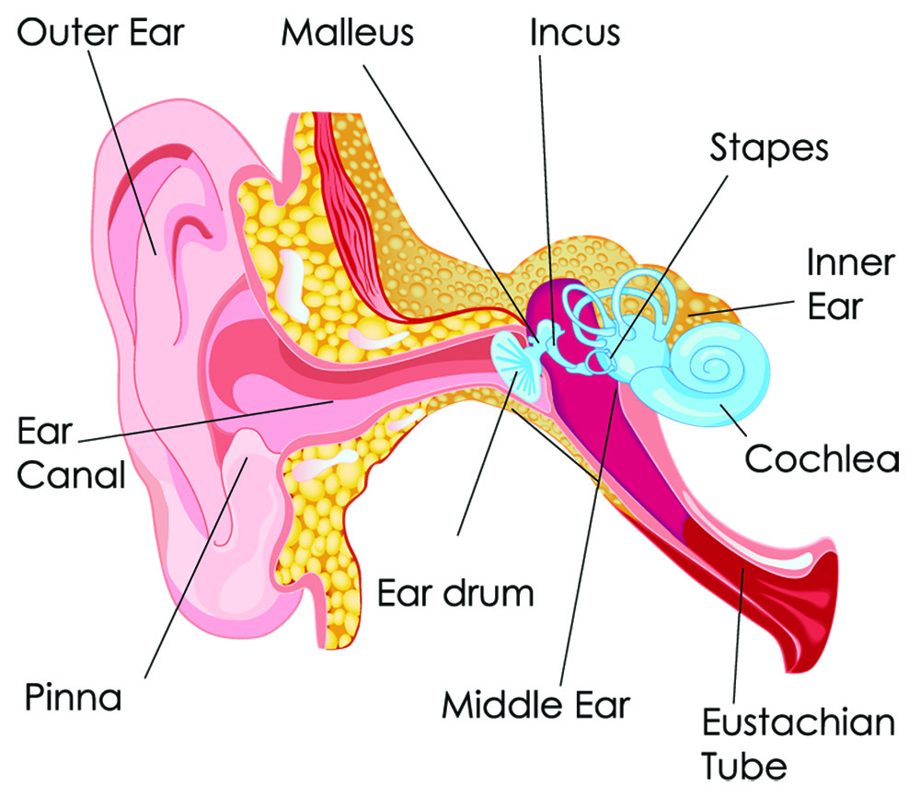
How noise induced hearing damage and deafness occur (and how you can prevent it)
We all know that exposure to loud bangs and prolonged noise can cause hearing damage and ultimately deafness, but what is less commonly known is how it actually occurs.
Naturally, aging is a major contributing factor when it comes to hearing loss. The ear works by processing sound waves and turning them into signals which can be understood by the brain. There are three main areas of the ear, the inner, middle and outer, and each plays a part in processing this sound. Over the years, the tiny hairs and nerve cells of the inner ear can become damaged through natural wear and tear, causing a muffling of sounds. This can often be counteracted by the use of a hearing aid, which amplifies the incoming sound before sending it to the ear.
Of course, old age is not the only cause of hearing loss, and there are ways that we can all work to preserve our hearing. In day to day life, a typical conversation takes place at around 60 decibels (dB) and any sounds below 85dB are considered safe, although there are many everyday sounds which regularly exceed this threshold, such as a typical kitchen blender, a ride on the London Underground and even squeezy toys for children and pets.
Exposure to these sounds may not cause immediate harm to your hearing but prolonged exposure may well do so. Scientists have determined that we risk damaging our hearing at above 85dB. A full shift in a typical factory may leave the worker with a ringing in their ears, while just 15 minutes riding a motorcycle at motorway speeds, or playing a musical instrument, can have the same effect. Without proper protection, this damage can be irreversible – leaving the sufferer with tinnitus (a permanent ringing in the ears) and diminished hearing ability.
In extreme cases, very loud blasts or sudden changes in pressure can cause the eardrum to rupture, causing immediate and permanent hearing damage, but for many sufferers, noise induced hearing loss (NIHL) comes through prolonged exposure in noisy environments.
It happens because highly delicate cells and tiny hairs in the inner ear become can be damaged by prolonged exposure to loud sounds. The ear works by processing sound waves and converting them into electrical pulses our brains can understand. The sound waves pass into our ears and cause our eardrum to vibrate. Three small bones in the inner ear (known commonly as the hammer, anvil and stirrup, but medically called the malleus, incus and stapes) then amplify those vibrations before they travel into the inner ear, where the cochlea processes the waves into sounds our brain can understand.
It is in the cochlea where these super sensitive hairs can be found. Each is attached to a nerve cell and, as they die, so the sound our brain hears becomes less clear. Unlike some animals, humans can’t regrow these damaged hairs and, as a result, any damage is not reversible. In most cases however, it is preventable, and the best way to protect these hairs is by wearing hearing protection while undertaking high noise exposure activities such as playing drums, riding motorcycles or shooting, and there are several types of hearing protectors out on the market.
Large earmuffs can work well at keeping harmful noise out, but can feel cumbersome when worn for long periods. They can make the wearer feel too hot and the fact that they are quite bulky means that they can feel heavy and tiresome to wear over longer periods. Unless they have integrated communications (like those used by Formula One teams) these ear muffs make it difficult to communicate with colleagues as all sounds, including speech, are blocked out.
For those who wear earplugs occasionally, foam earplugs are a popular choice. These are cheap and disposable, and do largely the same job as the large earmuff style protectors, but have the same inconvenience of blocking out all sounds including speech, sirens etc. For long term wear, particularly in hotter environments, they can be uncomfortable as they don’t wick away sweat. Some wearers also report vertigo style dizziness when wearing solid earplugs, which occurs because one’s balance can be affected when the ears are blocked.
Filtered earplugs, such as those developed by Auritech, overcome these downsides through their design. The silicone free, hypoallergenic thermoplast material is comfortable, hygienic and durable. The conical shape allows a comfortable fitting for most wearers and does not encourage sweat build up like solid foam plugs.
The real ingenuity in the design comes from the patented ceramic filter, which allows the user to hear desired sound such as conversation but still blocks out harmful noise. These filters also eliminate the disorientating pressure build up in the ears, increasing comfort and reducing fatigue too.
While your ears can be irreparably damaged in an instant, it’s also important to remember that hearing loss is usually progressive rather than absolute – so even if you are showing signs of having damaged hearing it’s absolutely worth ensuring that you wear proper protection to reduce the risks of further damage.
Auritech’s range of patented filtered hearing protectors can be purchased from www.auritech.co.uk, priced £19.95 per pair. A range of seven plugs (Biker, Sleep, Work, Shoot, Water Sports, Music and Travel) are available, each coming with a high quality protective carrying tube and with specifically tuned filters designed to meet the individual requirements of their intended environments.